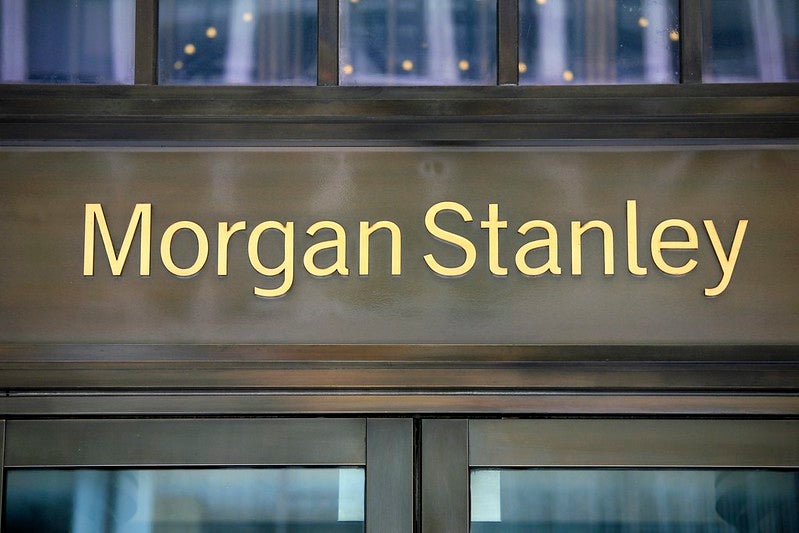Although Asia has been engulfed by the financial
crisis rooted in the US and Europe, private bankers remain
convinced the region’s wealth management growth story will live on.
Dan Jones, author of a new VRL report, Asian
Wealth Management 2009, sums up his findings on regulation,
recruitment and competition.
 ‘Every day you
‘Every day you
open a newspaper you are shocked by what has happened,” voiced one
private banker at the beginning of 2009, acknowledging that the
global financial meltdown is now as much an Asian crisis as it is a
Western crisis. The continent has been here before, of course:
whether the events of the late 1990s have helped prepare the region
for the latest slump is up for question, but private banks remain
convinced that the Asian high net worth individual (HNWI) growth
story will live on nonetheless.
The paths to achieving this goal, however,
differ significantly, not least when dealing with one of the key
issues to have faced Asian private banking in its formative years:
recruitment. The shortage of private bankers on the continent has
been widely publicised, but those banks keen to continue
expansionary activities will find a talent pool bolstered both by
cutbacks elsewhere and new graduates from the region’s numerous
training institutes.
The latest bank to have set up such an
academy is Standard Chartered Private Bank. The institution
believes being integrated into the wider consumer bank will give it
a key advantage in this regard.
“We have a large number of relationship
managers in our priority banking area and are now providing a
career path for those relationship managers to become private
bankers,” said Standard Chartered Private Bank global head Peter
Flavel.
“That transition is easy for us because
the private bank is part of the consumer bank. With separate
monolines there is a natural competition for talent – you don’t
often see migration from mass affluent into the private bank, which
we regard as a critical part.”
How well do you really know your competitors?
Access the most comprehensive Company Profiles on the market, powered by GlobalData. Save hours of research. Gain competitive edge.

Thank you!
Your download email will arrive shortly
Not ready to buy yet? Download a free sample
We are confident about the unique quality of our Company Profiles. However, we want you to make the most beneficial decision for your business, so we offer a free sample that you can download by submitting the below form
By GlobalData
|
Asia-Pacific |
|
|
Selected Asia-Pacific assets under |
|
|
Bank |
AuM ($bn) |
|
UBS |
180 |
|
Citigroup |
120 |
|
HSBC |
86 |
|
Credit Suisse |
56 |
|
Merrill Lynch |
50 |
|
Morgan Stanley |
37 |
|
Deutsche Bank |
30 |
|
BNP Paribas |
29 |
|
SocGen |
14 |
|
ING |
12 |
|
EFG |
10 |
|
Crédit Agricole |
9 |
|
Barclays Wealth |
8 |
|
Source: Banks/PBI |
|
Experience or youth?
Elsewhere, at Julius Baer, the emphasis is
very different.
“In Singapore I always jokingly say we
only have grey hair or no-hair bankers. Typically we choose very
senior bankers who have been in the business for 10 to 15 years,”
said Wilfried Kofmehl, CEO Singapore and head of south-east Asia at
Julius Baer.
But whether the focus is on experienced
bankers or unearthing a new generation of talent, private banks
acknowledge that all relationship managers must work hard to
restore clients’ faith in their capabilities in a region whose
burgeoning wealth has temporarily been stymied by the volatile
equity markets of 2008 and 2009.
“Undoubtedly the current unprecedented
market environment and the massive decline in securities holdings
in terms of value have eroded wealth in the region where
dollar-based assets dominate,” said Anuj Khanna, managing director
and head of private banking for north Asia at Credit Suisse. “The
investment climate is not conducive to private clients taking big
bets which they did actively the last two years.”
Those big bets have often been associated
with the theory that Asian investors have an increased appetite for
risk, a belief that continues to be held by many private banks.
“Asian wealthy individuals are more involved in the management of
their assets and are willing to take more risks compared to their
Western counterparts. They are more active in seeking investment
products since they are more active in managing their assets,”
commented Pierre Baer, CEO (Singapore and South Asia) at SG Private
Banking.
While the latter tendencies will always be
welcomed by wealth managers, attempts to shift the Asian client
from advisory to discretionary management of their assets have been
set back by recent events.
“Before the crisis we saw an increasing
percentage of investors starting to delegate their asset management
to the bank, though most still preferred to make their own
decisions,” said Kofmehl.
“Unfortunately this meltdown has not
helped the discretionary world to attract their money.”
With no asset class safe from that value
destruction, the newest emerging wealth markets may have seen their
HNWI numbers fall by as much as 20 percent, one senior management
figure from the region suggested. However, the same private banker
also claimed that the nascence of such markets means that numerous
HNWIs remain unaccounted for by leading industry surveys.
The turmoil has inevitably led to clients
sitting in cash, with private banks currently focusing largely on
relationship building with a view to future growth. What is clear
is that there will be opportunities for players large and small,
domestic and foreign. While all banks have had their reputations
tarnished, the two leading players in Asia, UBS and Citigroup, have
arguably suffered most of all.
Share of wallet
 The potential to increase share of wallet has never
The potential to increase share of wallet has never
been higher – though this applies equally to those outside the
private banking industry. With serious competition taking the form
of everything from brokerages in India to securities firms in
Korea, private banks have a lot of work to do.
Amid the carnage, another clear trend of
the past 18 months is the emergence of domestic wealth management
units as true competitors to global institutions. In China alone,
2008 saw almost all the major banks relaunch or revamp their wealth
operations, often creating stand-alone divisions for the first
time.
In Korea, Woori Financial Group has
achieved notable success with its Two Chairs brand, segmenting out
the private bank from its mass affluent offering and launching an
aggressive office expansion strategy.
In India, the market has witnessed the
arrival of a number of offerings backed by some of the country’s
leading business families – families which are now, for the first
time, viewing wealth management as a sector with which they can
further the reach of their already-extensive business empires.
In Malaysia, the key segment of Islamic
wealth management is being targeted by local powers such as RHB.
Even Singapore and Hong Kong, the offshore capitals of the region,
have seen local players like CITICFirst make significant inroads in
amassing the assets of the wealthy onshore population.
Though many domestic offerings remain in
the mass affluent or priority banking segments, the extensive
branch networks of these institutions gives them a head-start on
their foreign rivals, even given the fact that wealth is often
concentrated in the two or three larger cities where most private
banks will have a presence.
Strict restrictions on foreign branch
openings means most cannot hope to provide comprehensive HNWI
coverage in countries such as India, which has numerous large
cities, or Indonesia, where a fragmented economy has created a
number of business hubs across its 17,500 islands.
“The competition is very diverse. You have
the local banks who have made big progress in terms of their
capabilities, you have the traditional European banks and the US
banks who have been here for a long time, and others. I don’t
foresee that competition will be less in the future,” said Kofmehl
at Julius Baer.
That competition does not preclude
partnerships, however: Baer intends to work with local institutions
in Indonesia as it seeks to get a handle on the local market, while
foreign banks’ strategic relationships with their Asian
counterparts remain in place – particularly in wealth management –
despite the much-publicised bout of stake-selling seen at the start
of 2009.
For those private banks not fortunate
enough to have had a historic branch presence across Asia and
looking for a more direct route into the region, other ways of
entering the wealth management arena have had to be found – such as
acquiring stakes in trust companies, asset managers and brokerages
– with at least one vigilant eye being kept focused on regulatory
restrictions.
Regulatory vigilance
In India, 2009 has long represented the
year in which the country’s rulers open up the financial services
industry to foreign parties – whether that timeline has been
impacted by the financial crisis remains to be seen.
In China, the weight of regulation has
gradually been lifted but there remains a long way left to travel:
2008 saw the China Banking Regulatory Commission (CBRC) become
gradually more willing to accept foreign firms building stakes in
trust companies – an increasingly popular route into the Chinese
market – but the year closed with the CBRC issuing new regulations
relating to wealth management collaborations between banks and
trust companies.
“For China, the major challenge lies in
its regulatory evolution. The eventual hope is for the regulatory
bodies to open up for banks to offer products and services such as
derivatives, structured products and other more sophisticated
products,” said Baer from SG Private Banking.
Those structured products have created a
significant amount of controversy in Asia since the fall of Lehman
Brothers, with the vocal and public anger of retail investors being
echoed in private by HNWIs to their wealth managers. But that
dismay also hides a more fundamental shift taking place in Asia, as
clients seek alternatives to the traditional private banking
offering.
As Credit Suisse’s Khanna puts it: “the
focus has shifted to total client wealth which includes liabilities
as well as illiquid assets such as real estate or shares in client
companies. Increasingly, private banks need to take a
three-dimensional view of clients – looking at their life cycle
phase, source of wealth, and investment behaviour.
“This requires broader and more
sophisticated approaches. Many clients in Asia are no longer
satisfied with classical private banking services.”
This article is an extract from
a new VRL report Asian Wealth Management 2009. Written by Dan
Jones, the report looks in comprehensive detail at the intricacies
of numerous wealth markets across the region. To order your copy,
contact Shouvik Sen, shouvik.sen@vrlfinancialnews.com







